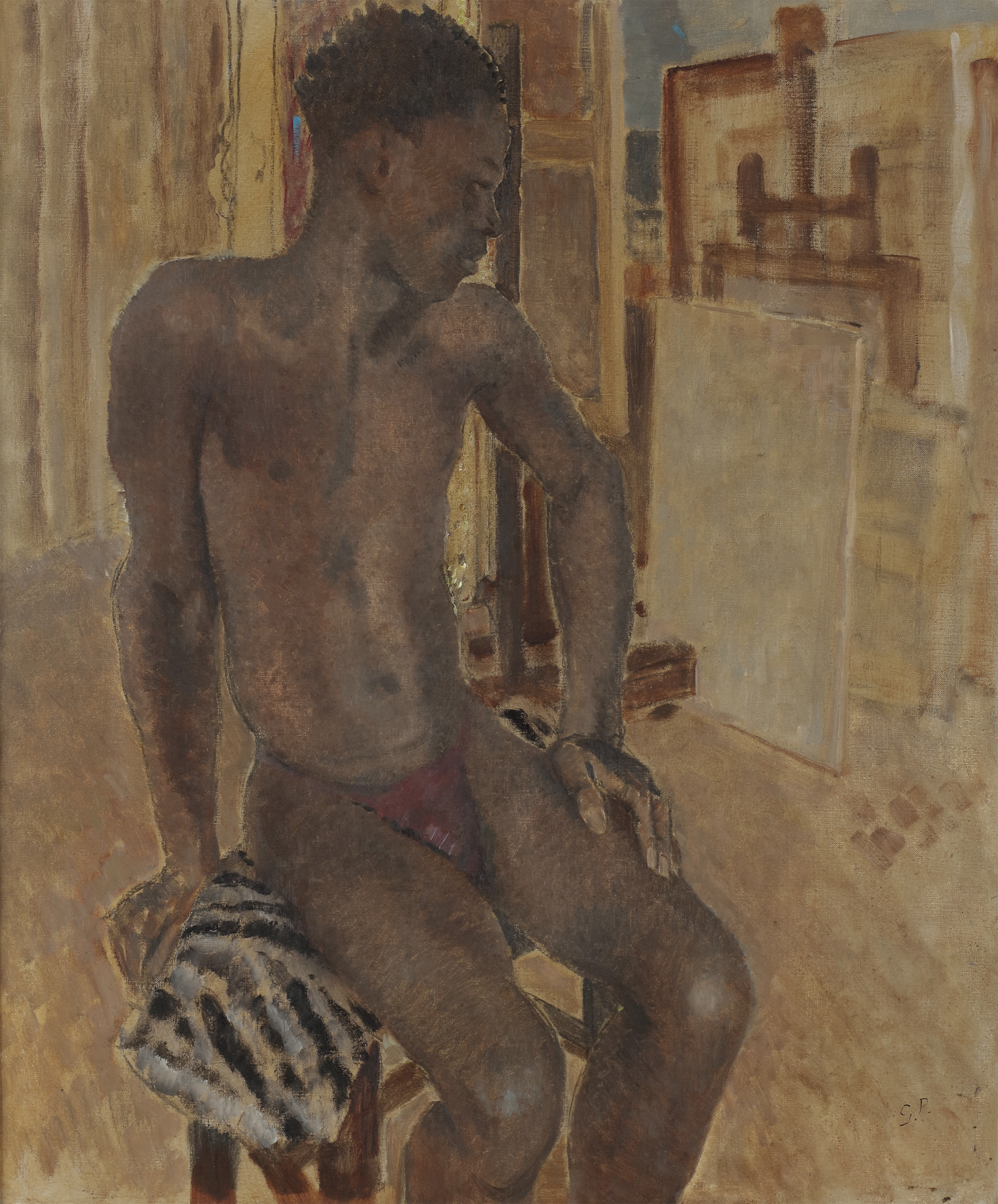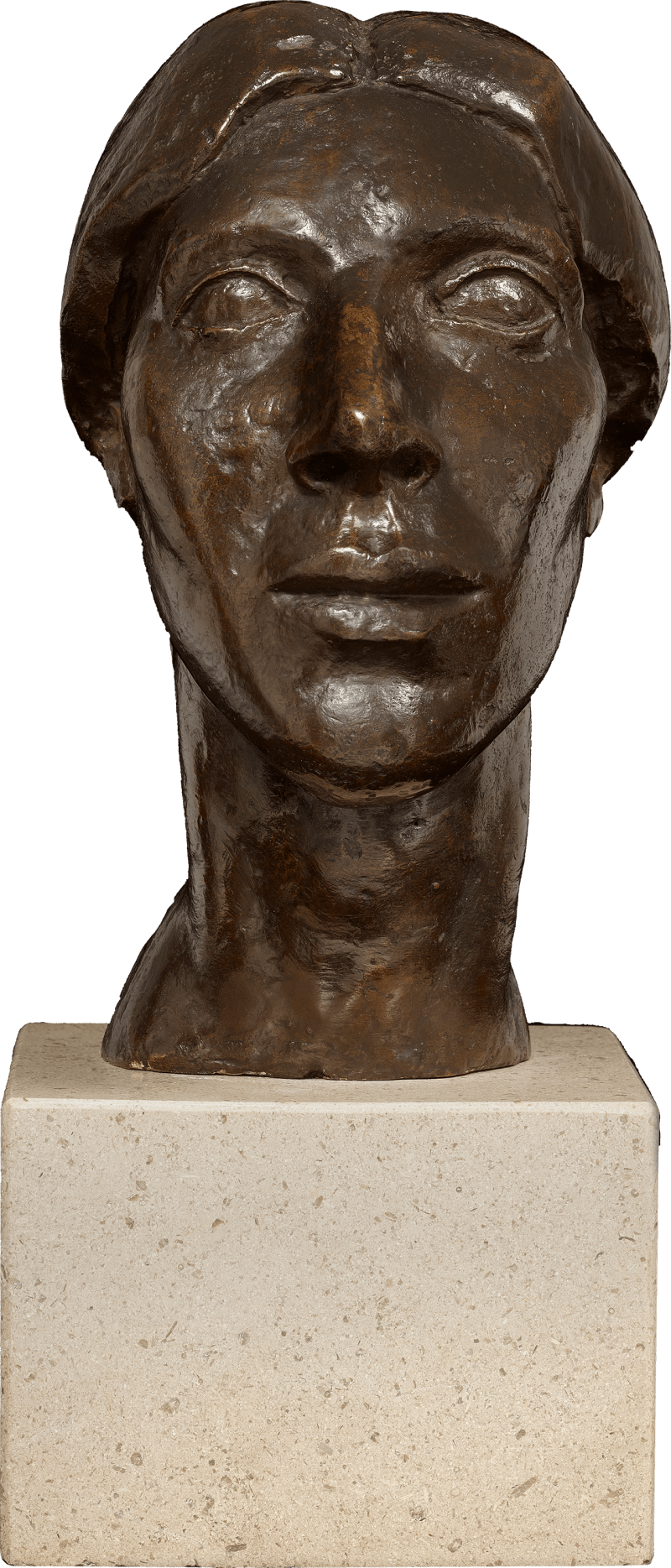Seated Model in the Studio (Henry Thomas) depicts Henry Thomas, a Jamaican-born man who moved to Britain in the 1920s and worked as Glyn Philpot’s domestic servant and occasional life model [fig. 1]. Thomas lived with the artist at his country house called Baynards Manor, a large mock Tudor property near Horsham, West Sussex.
This work, which was exhibited widely during and after Philpot’s lifetime, belongs to a group of paintings made during the final decade of Philpot’s career. In 1936 and 1937, Philpot painted several full-length and three-quarter-length depictions of Thomas, which frequently personify him in performative roles [if we have room in details sheet let's illustrate some e.g. The Harlequin]. The present work was almost certainly painted from life and is less staged and more naturalistic by comparison. Thomas is depicted in Philpot’s studio beside a neat stack of canvases leaning against an easel on the right-hand side of the picture. The attitude of his body is...
Seated Model in the Studio (Henry Thomas) depicts Henry Thomas, a Jamaican-born man who moved to Britain in the 1920s and worked as Glyn Philpot’s domestic servant and occasional life model [fig. 1]. Thomas lived with the artist at his country house called Baynards Manor, a large mock Tudor property near Horsham, West Sussex.
This work, which was exhibited widely during and after Philpot’s lifetime, belongs to a group of paintings made during the final decade of Philpot’s career. In 1936 and 1937, Philpot painted several full-length and three-quarter-length depictions of Thomas, which frequently personify him in performative roles [if we have room in details sheet let's illustrate some e.g. The Harlequin]. The present work was almost certainly painted from life and is less staged and more naturalistic by comparison. Thomas is depicted in Philpot’s studio beside a neat stack of canvases leaning against an easel on the right-hand side of the picture. The attitude of his body is relaxed but not entirely natural; the carefully arranged posture suggests both intimacy and performance, a balance that reflects Philpot’s broader treatment of the male nude at this date.
The handling of paint is typical of Philpot’s late style. Rather than rich, painterly surfaces, the canvas is covered with thin, dryly applied strokes that reveal a priming layer of pale yellow. This lends the composition a luminous, almost golden quality.















